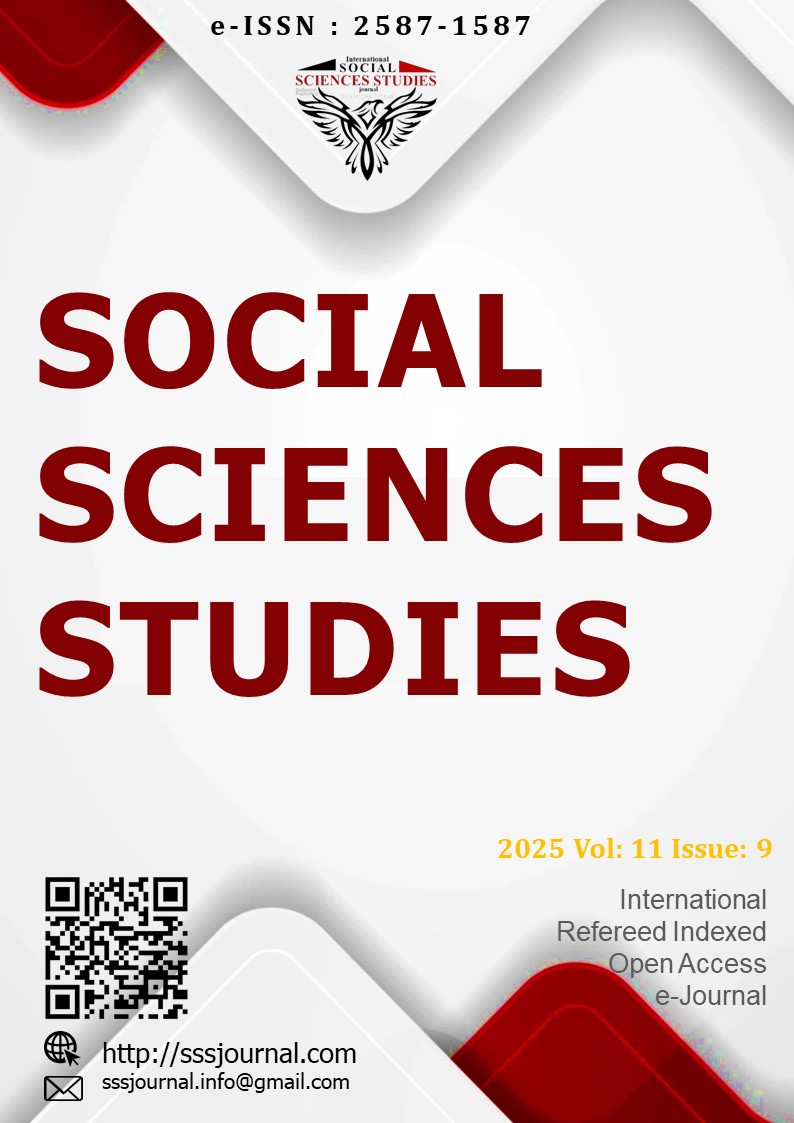Author :
Abstract
Kur’ân’ın temel amacı, iman esaslarını bildirmek ve bu esaslara uygun bir yaşam tarzı sunarak insanları dünya ve ahiret mutluluğuna ulaştırmaktır. Bu bağlamda, Kur’ân’da zaman zaman bazı ilmî hakikatlere işaret edilse de söz konusu âyetler doğrudan bilim öğretme amacı taşımaz. Onlar, insanları tefekküre, akletmeye ve gözleme teşvik eden uyarılar ve öğütlerdir. Bu işaretlerin mahiyetini anlama ve yorumlama işi beşerî idrake bırakılmış, tefsir geleneği de bu doğrultuda tarih boyunca hem aklî hem de ilmî açılımlarla zenginleşmiştir. Bu noktada Fahreddin Râzî’nin, et-Tefsir el-Kebîr (Mefâtihu’l-Ğayb) adlı eseri, yalnızca kelâmî ve felsefî içeriğiyle değil, tabiat bilimleriyle kurduğu irtibat açısından da dikkat çekicidir. Çalışmamız, Râzî’nin biyolojiyle ilişkili âyetleri ele alış biçimini, bu yorumların modern biyolojiyle mukayesesini ve din-bilim ilişkisi bağlamında taşıdığı değeri incelemeyi amaçlamaktadır.Râzî’nin yaklaşımı, Kur’ân’ı bilimsel verilerle doğrulama gayesinden ziyade, onu anlama çabasında tabiat bilgisinden faydalanma yönündedir. Bu tutum, tevhid ve nübüvvet eksenli hikmet temelli bir bakış açısını yansıtarak din ile bilimin birbirini dışlamayan, zaman zaman birbirini destekleyebilen alanlar olduğunu gösterir. Elbette onun yaşadığı dönemdeki bilimsel imkânlar sınırlıydı; bu nedenle bazı yorumlarının modern biyoloji verileriyle çeliştiği görülür. Bununla birlikte, insanın yaratılışı ve embriyolojik safhalara dair açıklamaları dikkat çekici ölçüde çağdaş biyolojiyle örtüşmektedir.Nitekim sülâleyi menî olarak yorumlaması; nutfe, alaka ve mudğa kavramlarını embriyolojik süreçlerle ilişkilendirmesi; rahmin korunmuş yapısına dair açıklamaları; sulb ve terâib yorumunda merkezi sinir sistemiyle bağlantı kurması; “üç karanlık” ifadesini rahim, plasenta ve karın duvarıyla ilişkilendirmesi, onun güçlü bir müşahede yeteneğine sahip olduğunu gösterir. Ayrıca tüm canlıların su ve toprak menşeli oluşuna dair değerlendirmeleri ile arı ve karınca gibi sosyal hayvanlara dair gözlemleri, Râzî’nin yalnızca fizyolojiye değil davranışsal biyolojiye de ilgi gösterdiğini ortaya koyar. Bu yönüyle onun yaklaşımı, Kur’ân’daki biyolojik işaretlerin, dönemini aşan bir kavrayışla yorumlanabildiğine dair önemli bir örnektir.
Keywords
Abstract
The primary purpose of the Qur’an is to convey the principles of faith and to present a way of life in accordance with these principles, guiding people toward happiness in both this world and the hereafter. In this context, although the Qur’an occasionally points to certain scientific truths, such verses are not intended to teach science directly. Rather, they are admonitions and exhortations that encourage people to reflect, reason, and observe. The task of understanding and interpreting these indications has been left to human comprehension, and thus, throughout history, the tradition of tafsīr has been enriched with both rational and scientific perspectives.At this point, Fakhr al-Dīn al-Rāzī’s renowned work, al-Tafsīr al-Kabīr (Mafātīḥ al-Ghayb), stands out not only for its theological and philosophical content but also for the way it engages with the natural sciences. This study aims to examine how Rāzī interprets verses related to biology, compare his interpretations with modern biological findings, and evaluate them within the broader framework of the relationship between religion and science.Rāzī’s approach was not to confirm the Qur’an through scientific data but rather to benefit from natural knowledge in his effort to understand it. This perspective, grounded in wisdom and centered on the principles of tawḥīd (divine unity) and nubuwwa (prophethood), reflects a view in which religion and science are not mutually exclusive but can, at times, support one another. Naturally, the scientific means of his era were limited, and therefore some of his interpretations diverge from modern biology. Nonetheless, his explanations regarding human creation and embryological stages show striking parallels with contemporary biology. For instance, he interprets sulāla as semen, relates the terms nutfah, ‘alaqah, and mudghah to embryological processes, describes the protective nature of the womb, connects the sulb and tarā’ib to the central nervous system, and links the “three layers of darkness” to the womb, placenta, and abdominal wall—all of which demonstrate his remarkable capacity for observation. Moreover, his views on the origin of all living beings from water and soil, along with his reflections on socially organized creatures such as bees and ants, reveal his interest not only in physiology but also in behavioral biology. In this respect, Rāzī’s approach constitutes an important example of how the Qur’an’s biological indications could be interpreted with an insight that transcended the scientific understanding of his time.





